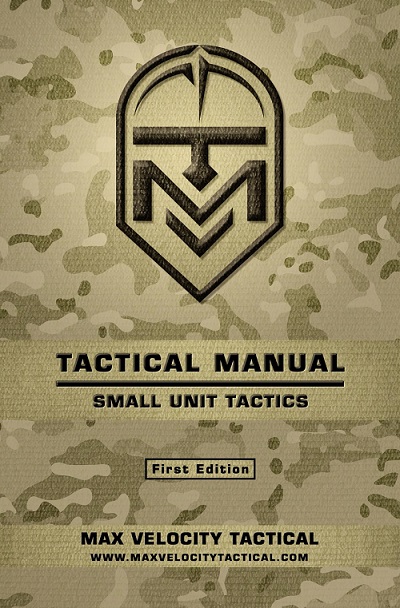Amazon Review: MVT Tactical Manual: Small Unit Tactics
MVT TACTICAL MANUAL: SMALL UNIT TACTICS
- Yes, it is a positive 5 star review.
- It comes from a position of some authority as the authors is “a regular U.S. army armor officer and a lifetime of fascination with tactics and military affairs.”
- It includes frank criticism which will allow me to comment.
- I believe that it gives the manual due credit for being what it is, simply the best small unit tactics manual out there. I wrote it like that for a reason. I don’t care about the Ranger Handbook – this Manual is specifically NOT THE RANGER HANDBOOK

I base this evaluation on having served as a regular U.S. army armor officer and a lifetime of fascination with tactics and military affairs. The author covers nearly all of the topics I would expect for preparation and training of a small infantry unit. (There are one or two exceptions, but they are not enough to change my rating. Rather, they are simply a reflection of the fact that no one volume can cover everything about small unit tactics, but this one comes very close.) The initial chapter on individual skills is really just an outline, but that is perfectly acceptable as the purpose of the book is not to teach those skills, and the outline serves to identify what the book assumes you know or will learn to implement the rest of the book. The remainder of the book is a first class explanation of good small unit tactics based on U.S. doctrine, U.K. doctrine, and some items which are not official doctrine but are clearly the result of experience. The primary tactical tasks covered include what I expected, attack, defense, patrolling, CQB, tactical vehicle movement, and military decision making (doctrine, situational assessment, planning/order process). The explanations are, for the material covered, short and well written prose with appropriate diagrams and bullet points/checklists mixed in. Page for page, this book explains more of small unit tactics better than any official manual I have read. The chapter on patrols is particularly good, and is far more likely to be understood by those without prior military training on the subject than the parallel material in the Ranger Handbook or most military manuals.
Now for a bit of nitpicking and what this tactical manual isn’t. I do have a few observations about how I think the Tactical Manual could be improved. First, the military decision making process information is buried towards the end of the book, it should be covered first. Second, the treatment of the METTC mission assessment and the OCOKA terrain analysis is not the strongest I have seen. The weakest part of this is the obstacles discussion. The book works on the general assumption that a squad, or at most a platoon, is operating according to its guidance. While that size unit will not generally create large obstacles on its own, even relatively small obstacles can be critical in the defense. Likewise, a better understanding of obstacles is needed to mount successful attacks around or through enemy obstacles. Third, the CQB chapter acknowledges that it is really more of an aide memoire for those who have attended a Max Velocity class. Unlike the rest of the book, which is geared towards those attending his classes, but is also very informative for those who have not, it is simply not a very useful standalone explanation. (see note*)
As with all books on tactics, you should not rely on just one if you can help it. (If, however, I was only allowed one reference to take with me to train a small unit, this would be the one volume I would take with me.) I recommend reading this one and several others to work through the weaknesses I noted and to gain context. Sweat saves blood. That includes the mental sweat of reading and learning from the experience and knowledge of others.

